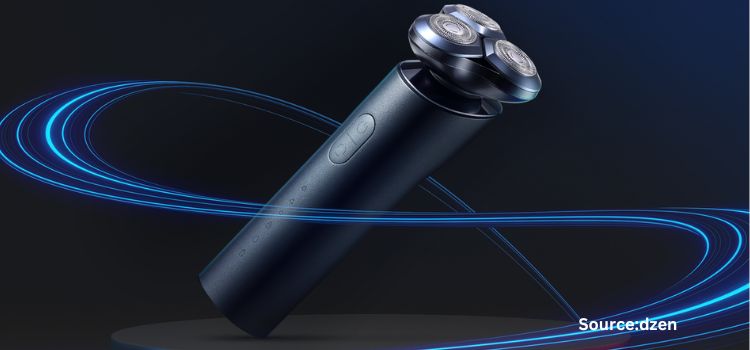
USB Guard Market by Type (USB 1.0, USB 2.0, USB 3.0, and Others), by Product (Webcam, USB Flash Drives, Memory Card Readers, Digital Audio Players, Computer Peripherals, Scanners & Printers, and Others), by Connector Type (Type A, Type B, Type C, and Lightning Connector), and by Application (Consumer Electronics, IT & Telecommunication, Automotive, Healthcare & Medical Devices, and Others) – Global Opportunity Analysis and Industry Forecast, 2024-2030
US Tariff Impact on USB Guard Market
Trump Tariffs Are Reshaping Global Business
Market Definition
The USB Guard Market size was valued at USD 5.06 billion in 2023 and is predicted to reach USD 10.11 billion by 2030 with a CAGR of 10.4% from 2024 to 2030.
USB Guard is a comprehensive security measure implemented either through software or hardware mechanisms to safeguard computer systems from potential risks associated with USB devices. It serves constantly monitors and controls the usage of USB ports to prevent unauthorized access or the introduction of malicious software. It may incorporate features such as automatic updates, heuristic analysis, and threat intelligence integration to stay abreast of evolving security risks and enhance the effectiveness of protective measures. By regulating the connection and data transfer processes of USB devices, USB Guard aims to detect and mitigate potential threats such as malware, viruses, or unauthorized data transfers that could compromise the security and integrity of the system.
Market Dynamics and Trends
The global USB Guard market is witnessing significant growth, driven by the growing recognition of cybersecurity vulnerabilities stemming from unauthorized USB access, which can lead to data breaches or malware infections. As organizations become more aware of the risks posed by USB-based attacks, the need for robust security measures to safeguard sensitive information and prevent unauthorized access to systems becomes increasingly apparent.
Moreover, the widespread adoption of USB devices across various industries, including healthcare, finance, government, and manufacturing, contributes to the escalating demand for USB Guard solutions. With USB devices being integral to data storage, file sharing, and peripheral connectivity, the risk of security breaches and data loss associated with USB usage rises. USB Guard solutions offer proactive defense mechanisms by monitoring and controlling USB port access, detecting and blocking malicious activities, and enforcing security policies to mitigate risks effectively.
Additionally, the evolving threat landscape characterized by increasingly sophisticated cyber threats, including zero-day exploits and insider threats, reinforces the need for advanced security technologies such as USB Guard. The dynamic nature of cyber threats requires continuous innovation and adaptation in security solutions to effectively counter emerging risks and vulnerabilities associated with USB-based attacks.
However, with a wide range of USB devices available, including storage devices, peripherals, and mobile devices, ensuring compatibility and effectiveness across different device types can be challenging, restraining the growth of the USB guard market. USB Guard solutions may struggle to adequately detect and mitigate threats from various USB devices, leading to gaps in security coverage and potentially leaving systems vulnerable to attack.
On the other hand, the proliferation of Internet of Things (IoT) devices and the widespread adoption of connected technologies present new opportunities for USB Guard market growth. With the increasing interconnectivity of devices and systems, the attack surface for USB-based threats expands, necessitating comprehensive USB security solutions to safeguard against potential vulnerabilities.
Market Segmentations and Scope of the Study
The knee implants market is segmented on the basis of type, product, connector type, application, and geography. On the basis of type, the market is divided into USB 1.0, USB 2.0, USB 3.0, and others. On the basis of product, the market is segmented into webcam, USB flash drives, memory card readers, digital audio players, computer peripherals, scanners & printers, and others. On the basis of connector type, the market is divided into type A, type B, type C, and lightning connector. On the basis of application, the market is categorized into consumer electronics, it & telecommunication, automotive, healthcare & medical devices, and others. Geographic breakdown and analysis of each of the aforesaid segments include regions comprising North America, Europe, Asia-Pacific, and Row.
Geographical Analysis
The Asia Pacific region dominates the USB guard market at present and is expected to maintain its position during the forecast period. This is attributed to the rising frequency and sophistication of cyber threats targeting organizations across Asia Pacific.
Recent cyber incidents, such as the ransomware cyberattack against Osaka General Medical Center in October 2022, underscore the urgency for organizations, especially those in critical sectors like healthcare, to prioritize cybersecurity investments. Disruptions caused by such attacks emphasize the importance of robust security measures, including USB Guard solutions, to safeguard sensitive data and critical infrastructure from cyber threats.
Moreover, regulatory initiatives and compliance mandates aimed at enhancing data protection and cybersecurity are driving market opportunities for USB Guard solutions in Asia Pacific. Countries including Indonesia, Thailand, and Singapore have implemented regulatory frameworks such as the Personal Data Protection Act (PDPA), which require organizations to implement adequate safeguards for protecting sensitive data accessed via USB devices. The commitment to regulatory compliance is further reinforced by government initiatives aimed at enhancing the cybersecurity infrastructure and capabilities in the region.
For instance, the National Cyber and Encryption Agency (BSSN) in Indonesia announced plans to utilize foreign loans for a cybersecurity ecosystem enhancement project, aimed at fortifying cybersecurity infrastructure and expanding capabilities such as the National Cyber Security Operations Centre (NSOC) and Cyber Security Incident Response Team (CSIRT). These factors collectively create a conducive market environment for USB Guard vendors, positioning them to capitalize on the increasing demand for effective USB security solutions across organizations in Asia Pacific.
On the other hand, North America is expected to show a steady rise in the USB guard market due to the growing adoption of remote work and Bring Your Own Device (BYOD) trends. With employees increasingly using personal USB devices to access corporate networks and sensitive data from remote locations, USB Guard solutions play a crucial role in securing endpoints and preventing unauthorized data transfers or malware infections via USB devices. USB Guard solutions offering seamless integration with remote work environments and providing enhanced visibility and control over USB usage are well-positioned to address the evolving security needs of organizations in North America.
Additionally, regulatory initiatives and compliance mandates play a significant role in driving market opportunities for USB Guard solutions in North America. Regulatory frameworks such as the Health Insurance Portability and Accountability Act (HIPAA) and the Payment Card Industry Data Security Standard (PCI DSS) impose stringent requirements on organizations to implement adequate safeguards for protecting sensitive data accessed via USB devices. Compliance with these regulations necessitates the adoption of robust USB Guard solutions to ensure data security and regulatory adherence, creating a conducive market environment for USB Guard vendors in North America.
Competitive Landscape
Various market players operating in the USB guard market includes Adata Technology Co. Ltd, Kingston Technology Corporation, Toshiba Corporation, Samsung Electronics Co. Ltd., Verbatim Americas LLC, Transcend Information Inc, Intel Corporation, Koninklijke Philips N.V., Netac Technology Co Ltd, and Teclast Electronics Co. Ltd. These market players are adopting various market development strategies including new launches to maintain their dominance in the USB guard market.
For instance, in October 2023, Samsung Electronics Co., Ltd. unveiled a new security feature called Auto Blocker, tailored to enhance device protection for Samsung Galaxy users. Auto Blocker offers a variety of controls, that identifies potential malware threats, while also preventing the execution of harmful commands and unauthorized software installations via USB cable connections.
Key Benefits
-
The USB guard market report provides the quantitative analysis of the current market and estimations from 2024 to 2030. This analysis assists in identifying the prevailing market opportunities to capitalize on.
-
The study comprises of a detailed analysis of the USB guard market trends including the current and future trends for depicting the prevalent investment pockets in the market.
-
The information related to key drivers, restraints, and opportunities and their impact on the USB guard market is provided in the report.
-
The competitive analysis of the market players along with their market share in the USB guard market is mentioned.
-
The SWOT analysis and Porter’s Five Forces model are elaborated in the study.
-
The value chain analysis in the market study provides a clear picture of the stakeholders’ roles.
Key Market Segments
By Type
-
USB 1.0
-
USB 2.0
-
USB 3.0
-
Others
By Product
-
Webcam
-
USB Flash Drives
-
Memory Card Readers
-
Digital Audio Players
-
Computer Peripherals
-
Scanners & Printers
-
Others
By Connector Type
-
Type A
-
Type B
-
Type C
-
Lightning Connector
By Application
-
Consumer Electronics
-
IT & Telecommunication
-
Automotive
-
Healthcare & Medical Devices
-
Others
By Region
-
North America
-
The U.S.
-
Canada
-
Mexico
-
-
Europe
-
The U.K.
-
Germany
-
France
-
Italy
-
Spain
-
Denmark
-
Netherlands
-
Finland
-
Sweden
-
Norway
-
Russia
-
Rest of Europe
-
-
Asia-Pacific
-
China
-
Japan
-
India
-
South Korea
-
Australia
-
Indonesia
-
Singapore
-
Taiwan
-
Thailand
-
Rest of Asia-Pacific
-
-
Rest of the World (RoW)
-
Latin America
-
Middle East
-
Africa
-
REPORT SCOPE AND SEGMENTATION:
|
Parameters |
Details |
|
Market Size in 2023 |
USD 5.06 Billion |
|
Revenue Forecast in 2030 |
USD 10.11 Billion |
|
Growth Rate |
CAGR of 10.4% from 2024 to 2030 |
|
Analysis Period |
2023–2030 |
|
Base Year Considered |
2023 |
|
Forecast Period |
2024–2030 |
|
Market Size Estimation |
Billion (USD) |
|
Growth Factors |
|
|
Countries Covered |
28 |
|
Companies Profiled |
10 |
|
Market Share |
Available for 10 companies |
|
Customization Scope |
Free customization (equivalent to up to 80 working hours of analysts) after purchase. Addition or alteration to country, regional, and segment scope. |
|
Pricing and Purchase Options |
Avail customized purchase options to meet your exact research needs. |
KEY PLAYERS
-
Adata Technology Co. Ltd.
-
Kingston Technology Corporation
-
Toshiba Corporation
-
Samsung Electronics Co. Ltd.
-
Verbatim Americas LLC
-
Transcend Information Inc.
-
Intel Corporation
-
Koninklijke Philips N.V.
-
Netac Technology Co Ltd.
-
Teclast Electronics Co. Ltd.

















 Speak to Our Analyst
Speak to Our Analyst





















